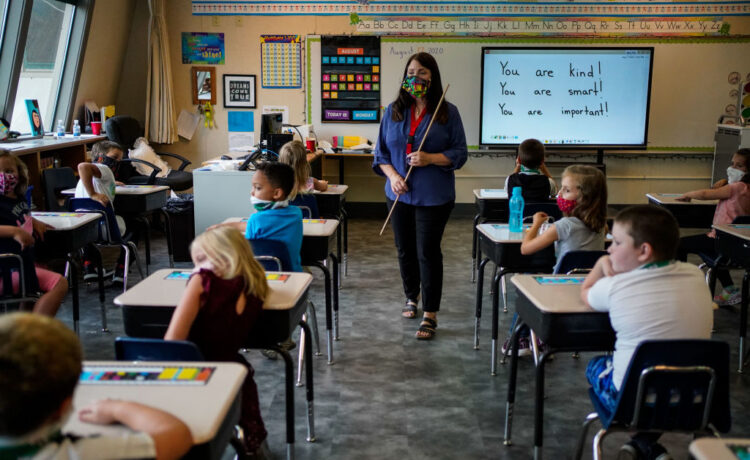President Biden’s signature education initiative has proven to be a costly failure for students. And now the administration is asking for even more money to make up for the blunder.
The Biden administration’s federal K-12 budget proposal for the 2025 fiscal year calls for an $8 billion grant program to further support public schools’ COVID-19 recovery efforts. The temporary Academic Acceleration and Achievement Grants would be aimed at increasing student attendance, expanding tutoring and adding learning time in public schools.
There’s nothing wrong with these goals, but the proposal comes as it is becoming clearer that federal relief funding for schools has not been put to good use for the nation’s 50 million students.
Congress doled out $190 billion to states for K-12 education during the pandemic, $122 billion of which was part of Biden’s American Rescue Plan (ARP) in March 2021. For context, that’s more than three times the total federal K-12 funding for the 2020 school year and more than $3,800 per student in extra funding.
These federal dollars are set to expire in September, when school districts must spend or obligate the bulk of relief aid. But nearly three years after Biden signed ARP, students still aren’t caught up, despite the federal windfall.
Most public schools were slow to reopen during the pandemic, and many students fell behind as a result. Researchers from Harvard University and Stanford’s Education Recovery Scorecard collaboration have found that students in grades three through eight lost half a year in math and one-third of a year in reading on average during the pandemic.
More recently, the researchers reported signs of progress in addressing some of these learning losses between the 2022 and 2023 school years but concluded, “In most states, achievement gaps between rich and poor districts are even wider now than they were before the pandemic.”
Overall, students have recovered only about one-third of their learning-loss in math and one-quarter of their learning-loss in reading. This isn’t entirely surprising, because academic recovery hasn’t been a priority for many public schools across the country. For proof, look no further than how many school districts spent pandemic funding from federal taxpayers.
Putting aside blatant examples of wasteful spending of pandemic funding — football stadium renovations, electrifying bus fleets and adding central office staff, to name a few — available data suggest that much of the federal money was spent on things that have little connection to student learning. Researchers at Georgetown University’s Edunomics Lab estimate that 20 percent of ARP K-12 dollars have gone to facilities — HVAC upgrades and building repairs, for example — with many districts also using the cash on teacher bonuses and backfilling budgets rather than investing in services that could address learning loss.
Had school districts prioritized academic recovery, more of the massive pandemic funding would have been spent on the things Biden now wants money for. For instance, the federal School Pulse Panel, which is collecting information from public schools on the impact of the COVID-19 pandemic, estimates that only 37 percent of public schools used relief funding for high-dosage tutoring (an intervention that would be funded under the president’s proposal).
But public schools shouldn’t shoulder all of the blame. By the time ARP was passed, schools had received $67.5 billion under former President Donald Trump. Research indicates that that amount was already more than enough to cover the costs of reopening. Schools were slow to spend the first two rounds of federal relief funding; the third round was simply overkill.
Not only that, but Congress required only 20 percent of ARP dollars to be spent on learning loss, which should have been the top priority for public schools at that point. All told, federal policymakers in both major political parties gave public schools a massive slush fund that lacked a coherent purpose. The dollars were spent accordingly.
Biden’s latest proposed grants are an admission of failure. Reasonable people can disagree about whether public schools needed the extra $122 billion in ARP, but it’s clear this historic investment had poor returns where it mattered most — inside the nation’s classrooms.
While the K-12 funds in the latest budget proposal have a clearer purpose and are far less than K-12 ARP funding, they underscore the missed opportunity to prioritize learning loss when fiscal coffers were overflowing. The reality is that students still aren’t caught up. Policymakers should be skeptical that another round of COVID-19 relief funding will do the trick.
Aaron Garth Smith is director of education reform and Christian Barnard is assistant director of education reform at Reason Foundation.
Copyright 2024 Nexstar Media Inc. All rights reserved. This material may not be published, broadcast, rewritten, or redistributed.















